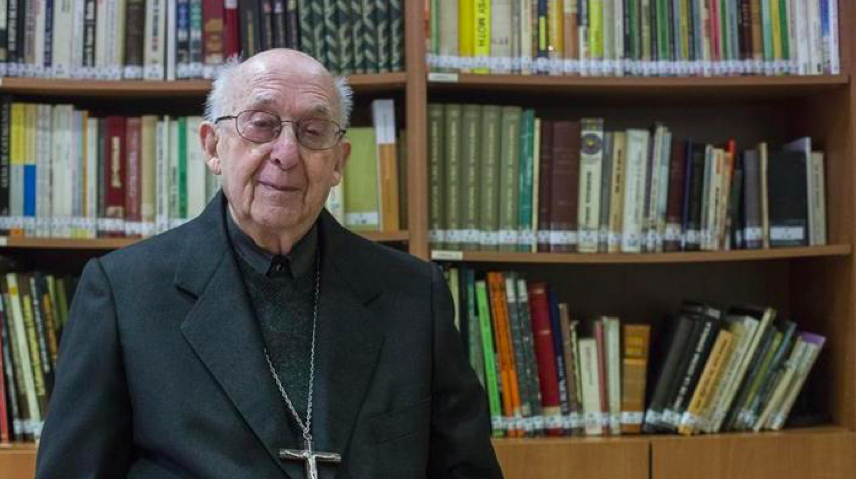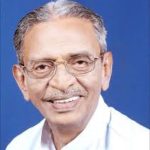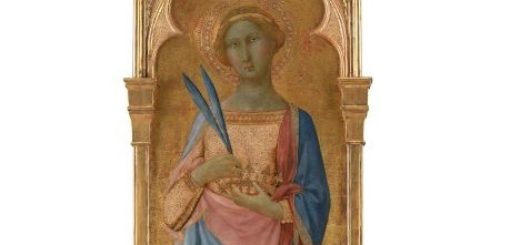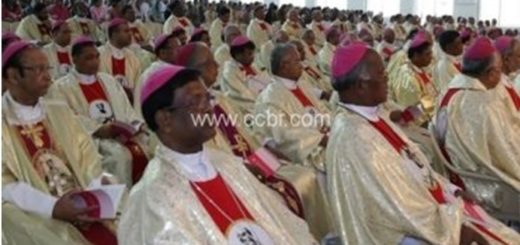Bishop donated body to science!

Paglia praises generosity of bishop who donated body to science after death – Domenico Agasso Jr.Fabrizio Assandri, in Vatican Insider, 25-01-2017
The bishop in question is the bishop emeritus of Girona, Camprodon i Rovira. The new president of the Pontifical Academy for Life said it was an expression of "gratitude for a healing, it is of symbolic value for humanity but the aim of it was not to dictate a rule"
Camprodon i Rovira (18 September 1926 – 26 December 2016)
 (Note: Seen in the picture above is the Spanish bishop (probably the first one to do it) Camprodon i Rovira who donated his body as a gift to Anatomy students and got his will executed after his death at 90. He, just like Francis Pappa, gave up his Episcopal palace and state honors and lived a simple life to make it a talk of the town. He is the rarest specimen among bishops to make the flag of Jesus fly high on the world’s horizon.
(Note: Seen in the picture above is the Spanish bishop (probably the first one to do it) Camprodon i Rovira who donated his body as a gift to Anatomy students and got his will executed after his death at 90. He, just like Francis Pappa, gave up his Episcopal palace and state honors and lived a simple life to make it a talk of the town. He is the rarest specimen among bishops to make the flag of Jesus fly high on the world’s horizon.
The interview story below was given by the President, Mgr. Vincenzo Paglia, of the Pontifical Academy for Life set up by Pope Francis on 15 August 2016, to Vatican Insider, Domenico Agasso. The academy is set up to explore all the frontiers of life – before birth, after death and through out life.
The startling question that rises in our minds, also in the minds of readers could be this: “How many of our bishops in India or abroad even think of doing such an exemplary act?” Any way we shall send this to all 180 bishops to see if anyone would at least respond or react. Usually what we see among all red-hats is their eagerness (as in Mt.23) even before death to get buried in the church, or central place in cemetery in decorated tombs and their aversion to be one with the ordinary folks after death even in the cemetery which is the leveling ground of all man-made inequalities.
Hopefully donating body is slowly becoming popular among ordinary people for various reasons. This scribe wrote a two part article on it after donating his body ten years ago to the Amrutha Institute of Medical Sciences, Kochi. While donating the body, the donor can make special request to take his/her eyes separately to benefit two blind persons. For that the transplantable portion of the eyes has to be taken within six hours after the person’s death.
What I did was to get all my six member family to sigh in the application both to sensitize them of the importance of the act and of their duty to contact the office in charge to take away the body, since the dead person cannot call up the office, although he/she is given a card to carry with the person, so that if death happens on journey it will be notified to the proper address by the persons who finds the body. This used to be my dislike to travel to US visits, as I am running 83 and can collapse at any time anywhere.
In any case the service one can do by donating one’s body and eyes is fantastic. According to statistics, if every dead person’s eyes are donated blindness in India can be eradicated in one week. Just think of what you help to achieve by donating what you have absolutely no need after death – your body and its organs. Here in Ernakulam the agency doing excellent service is SORT, Kaloor: www.sortcochin.org, info@sortcochin.org. There could be such help centers in various states for those who are interested to donate. Also you may visit: http://sites.google.com/site/jameskottoorspeaking/ to read: Gift of Life, Gift of Sight, SORT, for Organ transplant. Even a cataract operated eye can be used for transplant. It gives even to the elderly the opportunity to give sight to two blind people. So why not all try to be a light giver to the blind among us imitating the 90 year old bishop in the story? james kottoor, editor)
ROME; "Our bishop's final wish was for his remains to be donated to scientific research". It was Francisco Pardo Artigas – current pastor of Girona, a city at the heart of Catalan culture, where the airport near Barcelona is located – who informed faithful about the death of Mgr. Jaume Camprodon i Rovira in Santo Stefano. Camprodon i Rovira was Artigas' predecessor from 1973 to 2001.
There was no body in the coffin at his surreal funeral celebrated in the cathedral of one of the most secularised regions of the Iberian peninsula. "I donated my remains to the dissecting room at Barcelona's Faculty of Medicine," he says in his will. He gave his body as a gift to Anatomy students. Pardo celebrated the mass along with cardinals and bishops from across the region.
"He was conscious of what medicine had done for him ever since his first heart attack," Pardo writes in his letter to faithful, "and he wished to show his gratitude by donating his body in aid of research into all illnesses". "Straight after his death," it was the diocese itself "that granted him his wish". The bishop's statement was also published as is by the Spanish Episcopal Conference too. There were no expressions of disapproval from Church representatives, regarding his choice, at least not officially.
Camprodon had just turned 90, his wish was written in his will. He was a bishop who attended the Second Vatican Council and in 2000 he publicly asked for forgiveness for the Church's behaviour during Franco's dictatorship. He had made a name for himself by inviting faithful to speak Catalan only and there are some who liken him to Pope Francis. Just as Bergoglio turned down the papal apartment, so Camprodon refused the episcopal palace. He also turned down the Creu de Sant Jordi, a prestigious award given by the Catalan government.
Faithful remember him as a very simple man. In his final interview he said that his fondest memories were the ordinations of young priests. "Bishop Jaume was a simple and friendly man," says Carles Soler, another bishop of Girona who served between 2001 and 2008. "His gestures and ways were never loud, he didn't like attracting attention to himself but they were always effective". This last posthumous gesture of his, however, was definitely sensational. Camprodon himself acknowledged this: "If someone should be surprised by the destiny of my mortal remains," his will reads, "they should know that I have chosen this as my contribution to a society from which I have received a great deal and as a gesture of communion with the bread that was broken and shared at the Eucharistic table."
Vatican Insider discussed this with Mgr. Vincenzo Paglia, who has just taken up his post as President of the Pontifical Academy for Life, after he was appointed by Pope Francis on 15 August 2016.
1. What were your initial thoughts and reactions after learning the news of Jaume Camprodon i Rovira's decision?
"Knowing the bishop's personality, it is a gesture of generosity on his part. The gratitude he felt for his healing led to his decision to contribute to the advancement of scientific research for the benefit of others. He had received help in getting through a critical moment in his life. In this sense, the gesture has a symbolic importance about which we should not generalise about but give due attention to. This shows the bishop's humanity on the one hand and on the other is part of his personal experience which is what gives symbolic value to his choice. He is not dictating a general rule. It is important to underline this." Faithful may look at it like this: "So we mustn't have our bodies cremated but we can give them to science?”
"Like I said, we are in the realm of examples and symbolism here. The Congregation for the Doctrine of the Faith recently intervened on the issue of cremation, in order to present it in a humanistic light, which I think has done a lot to lessen disagreements: the issue is now totally open to discussion. I for my part believe it is important to remain sensitive to anything that has to do with death and its rites. In a society that seeks to sweep under the carpet, forget or exorcise death, I would not throw away all hope: there is a language, there are gestures, there is a physicality that are important. To those mourning a loved one. This language helps us understand the sense of the death of the body, which must be surrounded by affection and love, as we have done for centuries. The presence of the dead person's body also plays a part in making feelings concrete, historical, beautiful and deep. Death has been the focus on an enormous body of art, music and architecture that is an expression of this human need. It is no coincidence therefore that the text prepared by the Congregation for the Doctrine of the Faith considers cremation, clarifying nevertheless that the physical relationship and therefore the beauty of cemeteries in public spaces must not be erased because it reminds us of a common perspective that should be kept in mind. In the face of the many walls that are built, and all that barbed wire that is being reintroduced, I believe that it is useful to have a place where there are no walls, there is no barbed wire, also so that we can understand how to live not just how one dies."
2. Does the case of the Spanish bishop help improve the relationship and dialogue between faith and science? And how do you, Your Excellency, interpret the less 'philosophical' and more practical relationship between faith and scientific methods, in light also of the Spanish bishop's choice?
"The choice made by the Bishop emeritus of Girona touches on a particularly delicate issue, which is that of humanity's relationship with science and technology, a relationship that is changing shape. While in the past technology could be considered a tool, today it is becoming a widespread and all-embracing culture: in this perspective, dialogue between humanism and technology is paramount, provided that and in order that we do not end up subjugated by and lost in a purely technological mindset. Technology is by nature without a soul, without dreams, without that element of mystery that is essential to human life. Not everything can be entrusted to technology or else everything would be placed in the hands of the market, of those who have the means to develop technology and ultimately, to the law of the jungle and survival of the fittest: the risk of profit and exploitation would gradually increase. Hence why life and death bound by mystery are essential. They are essential to a scientific progress that is increasingly respectful of the centrality of the human being and to a scientific progress that is genuinely "humanistic" and not a law unto itself."
3.The Pope chose you as President of the Pontifical Academy for Life: what are the considerations and aims of this position?
"A new outlook for the Academy for life emerged on 2 January. The Academy's mandate was written in its institution: in the context of life's great frontiers and the potential and limits that keep on emerging in historic transformations that arise because of technology it is called to go through all of them, in order to identify that essential humanistic perspective I just mentioned. As such, the term 'life' becomes broad-reaching, it covers all aspects of humanity and is vast, including all issues to do with biotechnology, bioethics, robotics as well as life understood as development of phases of existence, meaning not only from birth and childhood to adulthood, the prolongation of old age to an extent never seen before in the history of humanity but also other little explored issues: I am thinking, for example, of the meaning of a woman who holds a baby inside her for nine months and the frontiers of expropriation of so-called "wombs for rent" and "surrogate motherhood".
Then there is the subject of the life of human ecology, the relationship with pollution, the prospects for justice in the medical field too. Think of the problem of the inequality in the distribution of medicines, lacking rights to treatments which in the 21st century is still not perceived as a human right. The Academy for Life is familiar with a reflection – in need of revision – on realities such as epidemics and wars that destroy lives on a mass scale. The barriers of rejection built up in people's consciences after World War II, seem to have fallen away. War means the annihilation of children, civilian, women, the elderly, human lives that are brutalised and led towards brutality, to the point of the human as well as biological destruction of life. We should also seriously ask ourselves a question asked by Luigi Sturzo in the mid-20th century. The question is about whether war should be made illegal across the planet, just as the conscience of the world brought it to illegalise slavery and torture, even though these are still practiced. This is the fascinating and tremendous prospect in which the Academy for Life wishes to proceed in its work, in dialogue with all cultures."
















